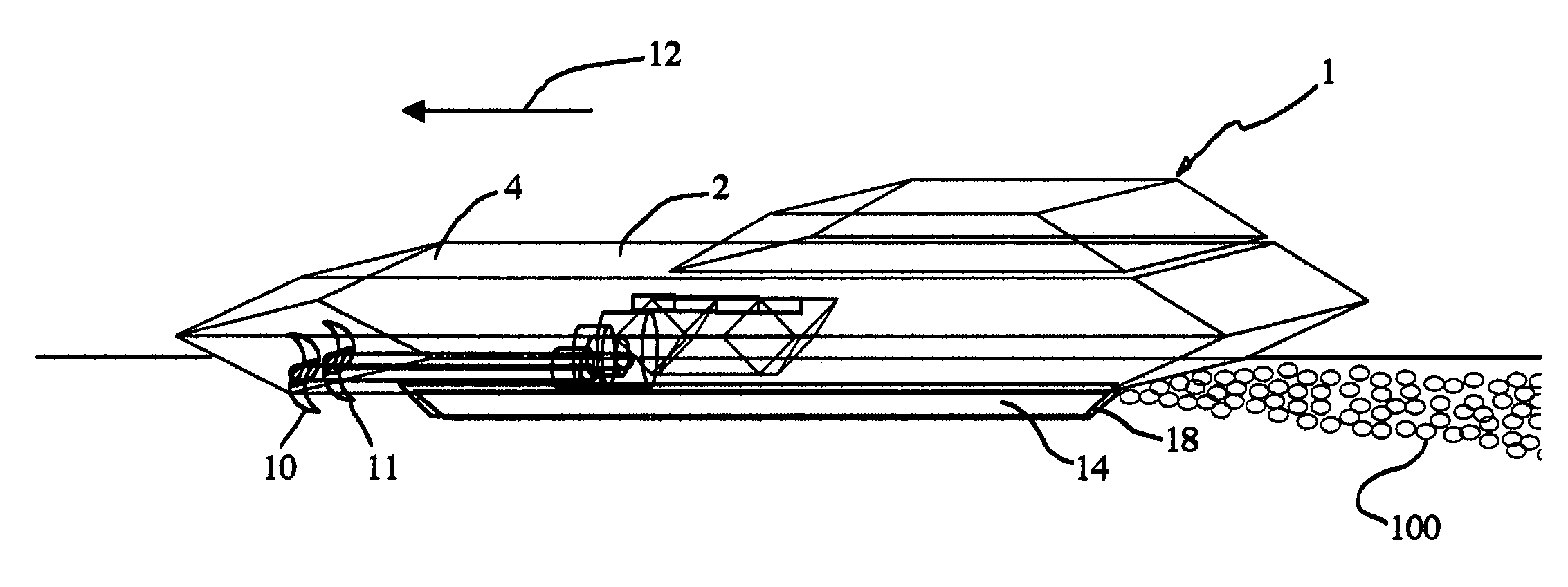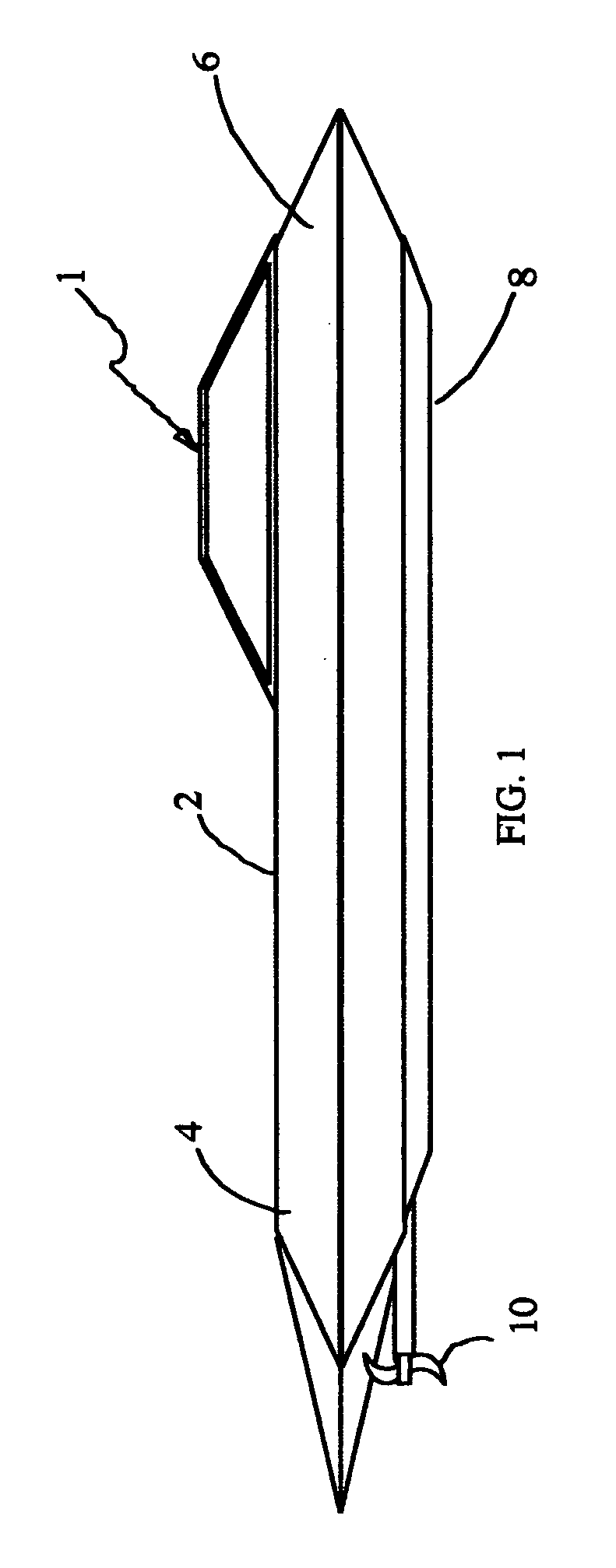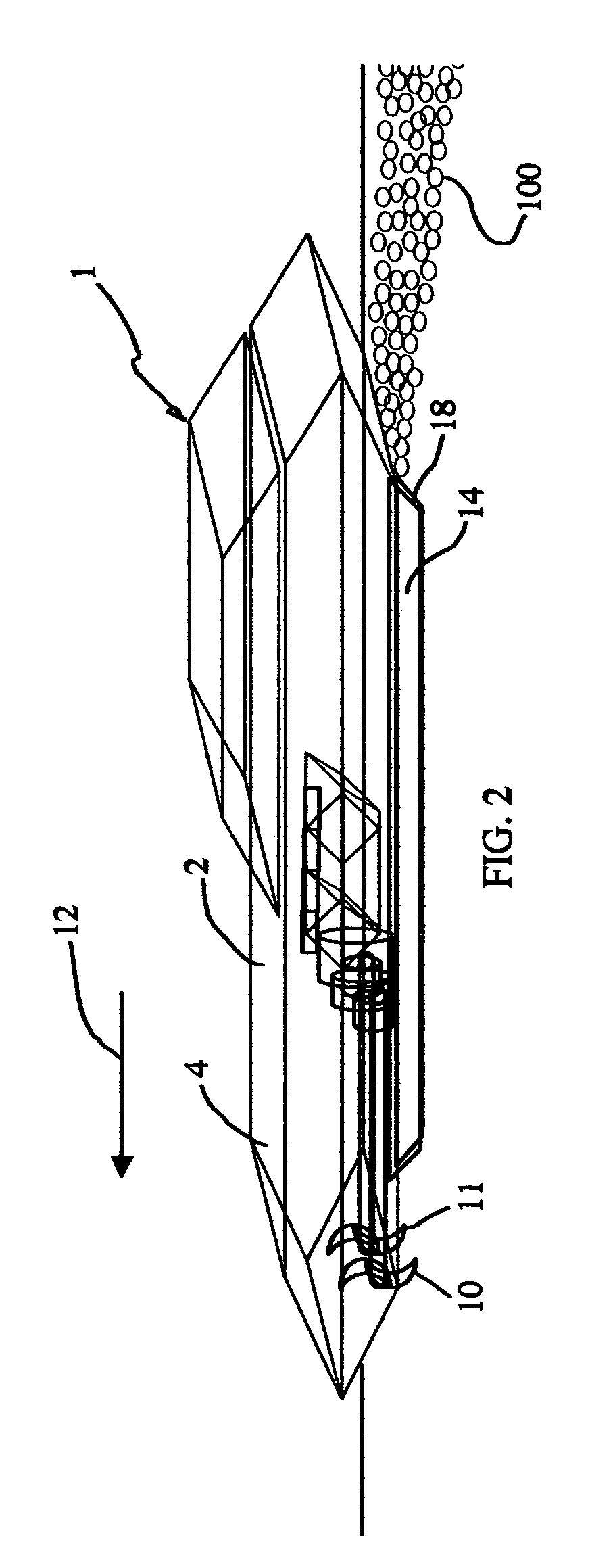Bow mounted vessel propulsion system
a propulsion system and bow mounted technology, applied in marine propulsion, special-purpose vessels, vessel construction, etc., can solve the problems of reduced speed, adverse operations, and substantial surface drag along the hull of the vessel, so as to improve fuel efficiency and vessel speed, reduce the hull surface drag, and improve the maneuverability of the vessel.
- Summary
- Abstract
- Description
- Claims
- Application Information
AI Technical Summary
Benefits of technology
Problems solved by technology
Method used
Image
Examples
Embodiment Construction
[0036]Waterborne vessel 1, shown in FIGS. 1–4 comprises hull 2 with bow section 4, stern section 6, and flat bottom surface 8. Propellers 10 and 11 are mounted on bow section 4. Propellers 10 and 11 are water surface-piercing propellers, that is they are positioned such that the upper halves of the propellers, that is the upper portions of the propeller blades as the propellers are rotating, are substantially above the surface of the water. Linear rail members 14 and 16 run longitudinally along the lateral sides of bottom surface 8, forming channeled space 18, between the rail members.
[0037]When propellers 10 and 11 are actuated, vessel 1 is propelled in forward direction 12. Since the propellers are partially rotating above the water's surface, they draw air into the ambient water. The air intermixes with the water to create air bubbles 100 at the bow of the vessel. As vessel 1 proceeds in forward direction 12, bubbles 100 travel rearwards directly under bottom surface 8 and are co...
PUM
 Login to View More
Login to View More Abstract
Description
Claims
Application Information
 Login to View More
Login to View More - R&D
- Intellectual Property
- Life Sciences
- Materials
- Tech Scout
- Unparalleled Data Quality
- Higher Quality Content
- 60% Fewer Hallucinations
Browse by: Latest US Patents, China's latest patents, Technical Efficacy Thesaurus, Application Domain, Technology Topic, Popular Technical Reports.
© 2025 PatSnap. All rights reserved.Legal|Privacy policy|Modern Slavery Act Transparency Statement|Sitemap|About US| Contact US: help@patsnap.com



